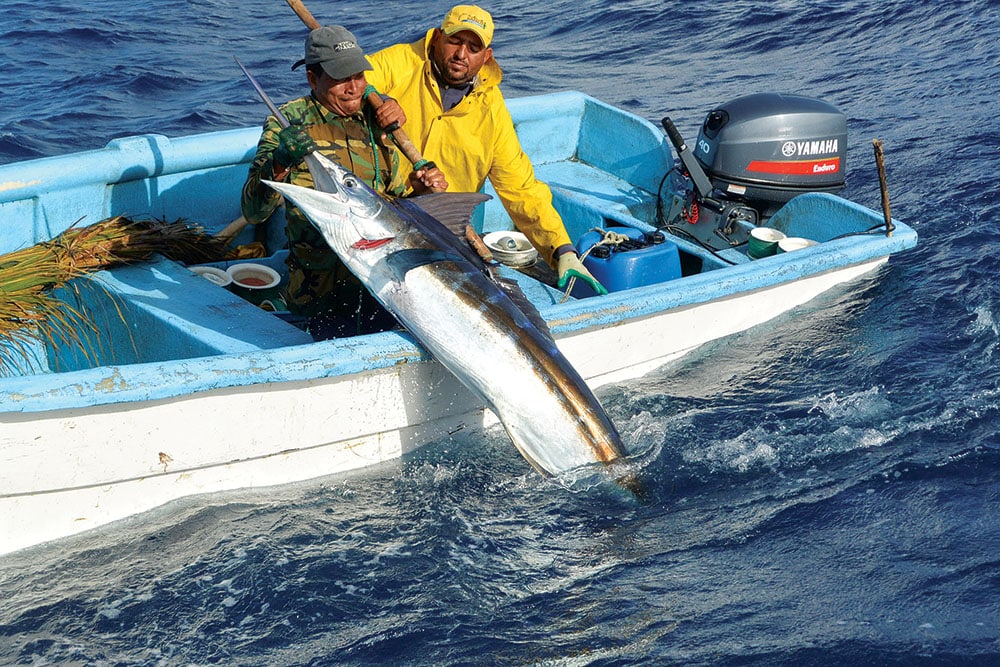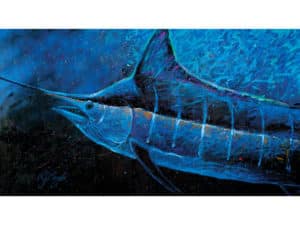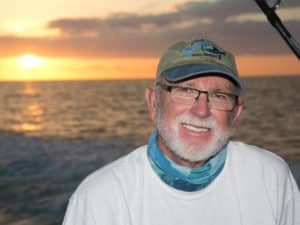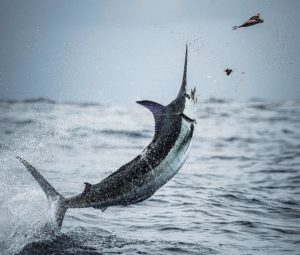
FADs of the Dominican Republic
When you’re hooked up, backing down on a blue marlin with waves crashing over the transom and a greyhounding billfish in the distance, the last thing you need is an outboard-powered panga appearing behind your boat with gaffs drawn, attempting to sink steel into your billfish before you can release it. This has become a frequent occurrence in many of the hot spots on fish aggregating devices (FADs) off the Dominican Republic. It causes outrage among those in the cockpit, and a serious safety risk for all involved. Many people are seeking a solution to this growing and chaotic situation.
A separate article could be written (and probably will be) on the potential ecological consequences of FADs, but the larger issues surrounding the FADs in the D.R. concern social conflicts between visiting sport-fishing boats and the local fishermen. Built and deployed by small-scale cooperatives of fishermen from nearby fishing towns to increase the productivity of their fishing operations, the FADs have undoubtedly -contributed to banner marlin catches. Made primarily of rope, milk jugs, palm fronds and anything else that will either float or provide protection for baitfish, the FADs attract predators like marlin, and therefore attract visiting sport-fishing boats. However, as the number of boats fishing there continues to increase, so do the concerns of what can be done to minimize confrontations and still allow the local fishermen to fish their FADs.
I can’t say I fault the local fishermen for doing anything possible to make a living, and I understand that they feel a sense of ownership of every fish caught around their FAD. If you look at the situation from their point of view, it gives you a different perspective. You watch a multimillion dollar sport-fishing boat fish the FAD that you built and deployed from your panga, while using a less efficient hand line. When a visiting boat hooks a marlin, you must watch as dollar signs swim away when the crew releases the fish. Who wouldn’t chase a billfish and start swinging a gaff if it meant putting necessities on the table for your family as a result?
Conversely, as an angler, it’s hard to swallow when you watch the jumping marlin you just fed off a teaser lose its color as it is gaffed and pulled into the panga. Members of the sport-fishing community are -sympathetic toward the local fishermen, with many saying something along the lines of, “We are fishing on their FADs and essentially reaping the benefits of their gardens.” Fisheries being an open-access resource is far -different than your neighbor taking tomatoes from your garden, but this thought process does shed further light on the -situation.
Different ideas exist on how to reduce the confrontations, yet the problem continues because a long-term -agreement between the sport-fishing boats and the cooperatives of local fishermen has not been established. Many crews have simply put a Band-Aid on the problem by either giving money or bycatch of tuna, wahoo, and dolphin to the pangas so that billfish can be released. Many object to this solution because they do not feel the panga fishermen deserve to be compensated for letting them release a fish.
Others have simply begun killing their blue marlin for the local fishermen to prevent the panga trying to gaff the fish themselves, solving the confrontation issue but creating a conservation problem. No consistency or “norm” for what sport-fishing boats should do exists in this situation because every boat handles the situation differently. A boat one week could allow the local fishermen to gaff a fish, while one the following week does everything -possible to prevent this from happening.
Short-term profit motivates the local fishermen to harvest marlin, in spite of the fact that billfish sell for far less than a dollar per pound at the market. But the value of releasing the fish and the socioeconomic benefits g-enerated from sport-fishing constitutes an intangible concept because they rarely see the long-term benefits of letting that fish swim away. This is the mindset that must be changed.
In addition to education, local -fishermen from the cooperatives must benefit directly from the socioeconomic benefits of sport fishing. Whether by providing opportunities to work on boats, at marinas, or even potentially running a charter-boat operation, there must be a way for some of the fishermen to see the benefits directly generated from sport fishing. This has been done in other inshore fisheries where commercial fishermen were taught to guide and, as a result, transitioned their career toward a recreational fishery. If you look at other top billfish destinations such as Costa Rica, Guatemala or Mexico, local fishermen have found jobs directly resulting from sport-fishing tourism; the Dominican Republic should be no different.
The Marina at Casa de Campo recently took an instrumental step in beginning to find a solution by organizing a meeting between some of the fishermen from the cooperatives and visiting sport-fishing captains and owners. In an effort to enhance the relationship between the sport-fishing boats and the local fishermen, the sport-fishing boats will be charged a flat rate, possibly between $300 and $500, as part of their dockage fee. The pot of money created will go toward buying hand-held radios and GPS units for the panga fishermen, and potentially be used to construct more FADs. I am not certain about the effectiveness of increased FAD production, but I assume the logic is the greater the number of FADs, the less likely a confrontation will be. The underlying goal is to reduce confrontations and the number of marlin taken by local fishermen.
The final solution has yet to be determined, and compliance by the cooperatives of local fishermen remains a big concern, but I truly hope the funds generated by visiting boats directly benefit the locals and work toward a long-term solution that provides alternatives for the fishermen. If used correctly, these funds could provide safer fishing conditions while increasing benefits for the local fishermen, and reducing the concerns of the visiting sport-fishing boats at the same time.







